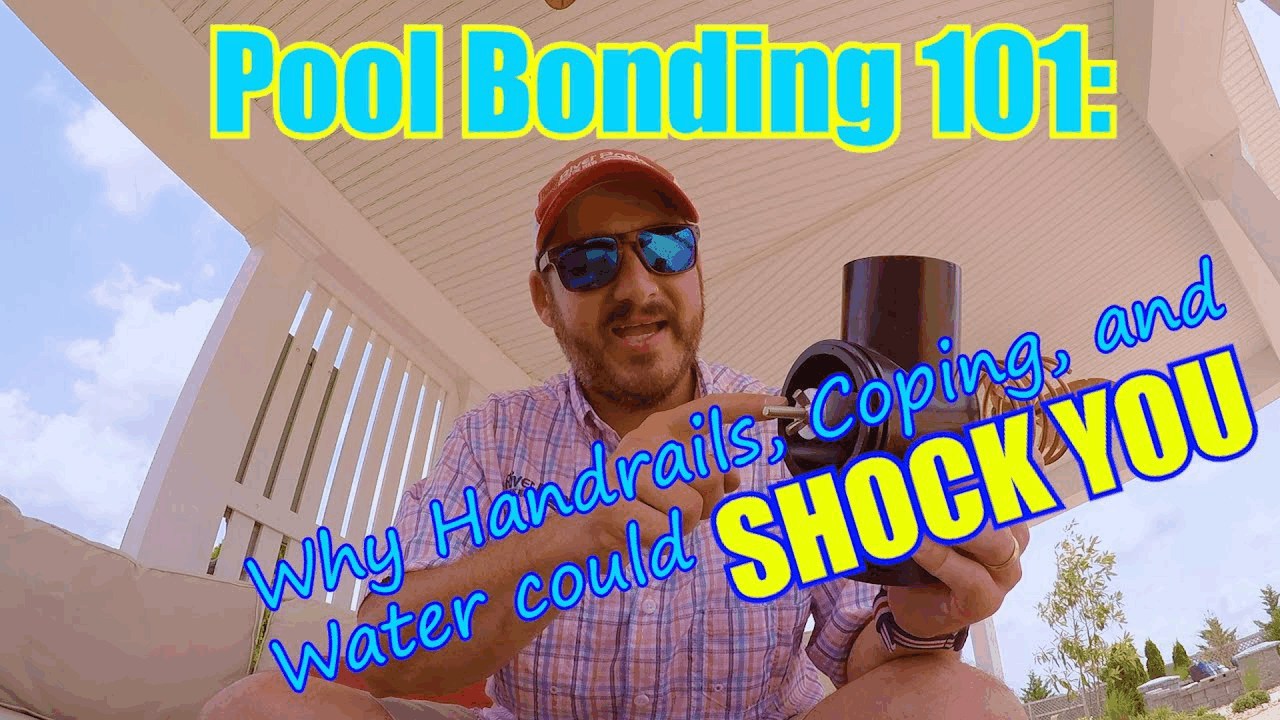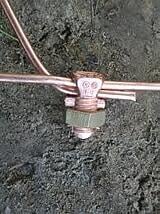
Pool Bonding 101: Why Handrails, Coping, and Water Could Shock You
...and you thought you were supposed to shock the pool, not the other way around!
Whether you are experiencing this in your own inground pool, or are in the process of researching for your future pool, this article will give a brief explanation of swimming pool bonding in non-pool guy terms.
The key phrase to become familiar with here is equipotential bonding, which is essentially a function of connecting various pool components together with a bare copper wire to make them the same potential.

Why does my pool shock me?
Since electricity will flow if some areas have different voltage than others, we use a bonding grid to equalize the electrical potential around the pool. This bonding grid connects all metal components in the pool area with bare copper wire. If your pool is shocking you, contact your pool company or a certified electrician to solve the problem.
What is electrical potential?
To understand potential, imagine how water flows through a pipe. It will naturally flow from an area of higher pressure to an area of lower pressure. If both ends of the pipe have equal pressure the water will not move, regardless of the level of pressure.
Electricity works in the same way. There has to be a difference in pressure (or voltage) to create a flow of electricity from one point to another.
The purpose of equipotential bonding is to equalize the pressure around the entire pool so your body doesn’t create the circuit between areas of differing potential which would result in getting shocked.
This is done by creating a “bonding grid.”
What components are in the bonding grid?
The bonding grid is established by connecting a bare copper wire to various components around the pool which include but are not limited to:
- All metal components within 5’ of the water’s edge of the pool including handrails, ladders, diving board jigs (the part that goes in the concrete), slides, pool lights with metal components, etc.
- The metal reinforcement used in the 36” of the pool patio surrounding the pool.
- At least 9 square inches of metal in contact with the water in the pool.
How are the connections made to these components?
 All components such as handrails and ladders that have anchors recessed into the patio are bonded by connecting the copper wire to the side of the anchor.
All components such as handrails and ladders that have anchors recessed into the patio are bonded by connecting the copper wire to the side of the anchor.
The reinforcing metal in the patio is connected to the bonding grid by fastening the copper wire to the metal with a bonding lug (picture) at multiple points around the pool.
The required nine square inches of metal in the water can be satisfied through the use of a submersed metal pool accessory such as a light or ladder, or if no submersed metal component is used, through the use of a metal plate known as a “Bondsafe 680” installed in the throat of the skimmer. This is a wonderful product and is perfect for fiberglass pools.
What kind of “shock” are we talking about here?
The good news is that in most cases the “shock” that occurs is somewhere between 1 and 3 volts, which is considered a nuisance voltage.
This often results in a tingling or stinging sensation when a person touches the handrail, ladder, pool coping, or water from outside the pool.
These sensations can become more perceptible when there is a cut or nick on the part of the hand touching the component or when the skin softens after spending a long time in the pool.
Children are often more perceptive to this than adults and are often the ones who initially notice the problem.
How can we eliminate the problem?
The first thing you need to do is contact your pool guy or a certified electrician to troubleshoot the problem.
There is a chance the pool was improperly bonded if the pool was built before recent changes to the electrical code were enforced.
The problem could also originate from your utility provider or from a wiring flaw outside of the pools bonding grid that is back-feeding electricity to the pool area.
If the pool was bonded correctly there is a relatively good chance that the solution is simple once the problem is identified.
Well, there you have it: Pool Bonding 101.
Please feel free to share your thoughts or questions in the comments section.
If you're interested in buying a fiberglass pool for your home, you can browse our pool models, try out our pool pricing calculator, or request custom pricing. You can also download our free ebook below for more information. Happy swimming!
Up Next:
Inground Pool Light Cost & Other Common Lighting Questions
16 Pool Fence Ideas That Will Upgrade Your Yard
Editor's note: This blog post was updated on July 10, 2020.




